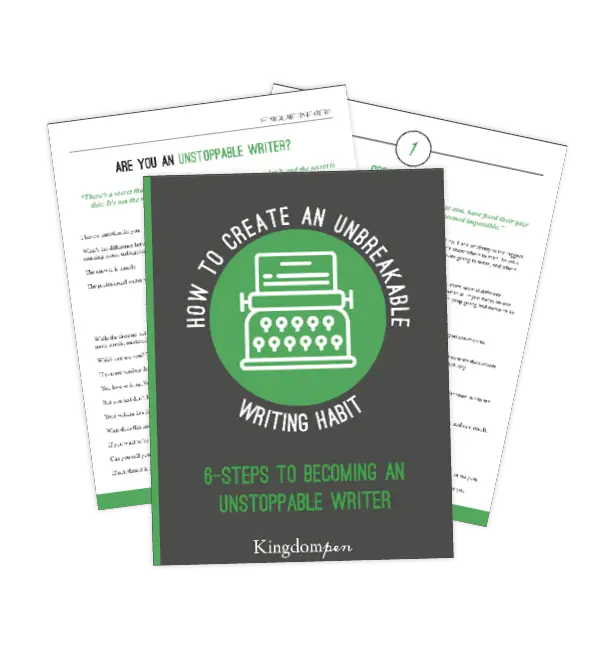By Karissa Chmil
They say that the light is brighter when surrounded by darkness, that a noise is louder when everything was only just quiet, and that pain is sharper when it comes directly after comfort.
The same is true for characters.
Maybe your protagonist is loyal, or your side character is shy, or your villain is arrogant, but how do you really show that? How do you make those traits stand out in the readers’ minds so that they can’t put the book down because they’re so deeply invested in the character? And how do you make your characters’ specific qualities so memorable that, even when the reader finishes the book, they’ll never forget the journey you and your characters took them on?
The answer is contrast.
These contrast characters--as you probably know, if you’ve read the title of the article--are called foil characters.
But what exactly is a foil character? Why do you need one? And how on Earth do you begin to write one?
Well, my friend, I’m glad you asked.
What is a foil character?
A foil is a character whose specific virtues/vices highlight the opposite in another character, quite often the protagonist.
Or, quite simply, a foil character is a character the writer uses to draw attention to a characteristic of another character by using contrast. The writer crafts a character with qualities directly intended to contrast those of another character.
For example, think of the classical foil of Watson and Holmes.
Sir Arthur Conan Doyle’s Sherlock Holmes is a brilliant detective whose deductive powers astound all those around him. At the same time, however, he is cold and impersonal, relying on logic alone for the decisions he makes.
Meanwhile, Watson, Holmes’ foil character, is--especially at the beginning--a man of somewhat average intelligence, not particularly prone to amazing feats of deduction. That said, though, his personality is much warmer and more friendly than that of Holmes, and, while his deductive skills may be less than the detective’s, his social skills are certainly more.
The constant contrast Watson provides as he follows Holmes around--even once Watson’s deductive skills begin to grow--highlights both the detective’s skills and his flaws so well that it cements these characteristics of Sherlock Holmes’ firmly in the reader’s mind.
Because that’s what foil characters are all about: contrast.
Why do you need a foil character?
I’ll be the first to admit it--foil characters can be hard.
Pinpointing what you want to highlight, deciding how to do it, and pulling off that delicate show-don’t-tell over the course of your novel isn’t something you can do with your eyes closed.
So is it worth it? Is it worth all that extra brainstorming and intentionality and the many headaches that may come with foil characters?
Yes.
Yes, my friends: foil characters are worth it.
You can be told that it’s hot a thousand times, but it’s not going to be until someone dumps an icy bucket of water over your head that you realize how hot you are--and in a hurry.
And, in the same way, you can tell your readers on every page that your main character is loyal (not that I’d advise it), but until you have a character who doesn’t think twice about lying and turning his back on others, it won’t be all that firmly cemented in your readers’ minds.
Humans always compare things, even if it’s done subconsciously. A skyscraper’s tall? What have I seen that’s smaller so that I can really take in the contrast between the two? Pins are sharp? What have I touched that’s not sharp so that the contrast is clear in my mind?
And, at the same time, foil characters provide a remarkable outlet with which to show readers your theme. Showing your main character’s attitude towards the theme as well as showing through foil characters how other people deal with it is an amazing way to develop it throughout the book.
Take Disney’s Lightning McQueen, who loves the attention and the fame, and his foil character, Tow Mator, who merely enjoys being with his friends and having fun.
Could we have seen this side of McQueen without Mator?
Probably.
His characteristic moment was well-done, and the watchers would probably have picked up on it eventually.
Still, the contrast that Mator provided throughout the movie made that difference so much more memorable and clear in the minds of those watching, and the foil between the two was very well-done.
In addition, with themes such as integrity and humility, these differences between the two characters played a major role in how the filmmakers chose to represent the theme.
Foil characters help a certain characteristic stand out in the readers’ minds as well as providing a way for the theme to shine through character interactions, and taking the time to add them to your writer toolbox won’t be time wasted.
How do you write foil characters?
So how do you actually write one of these marvelous foil characters? The theory is nice, but it won’t do much until we apply it.
I said above that it’s hard: And it is. But it’s also simple.
You need to:
See? Simple. Not easy, but simple.
Now let’s go a little bit deeper.
When it comes to the first step, deciding what you want to highlight in a character, going back to your theme is always a good idea.
One of the themes in Harry Potter and the Philosopher’s Stone is friendship, and that’s one thing that Draco Malfoy, a foil character of Harry’s, contrasts.
Draco values prestige and influence and judges those around him by this measure, whereas Harry prizes loyalty and true friendship and doesn’t care much for what kind of importance they have in the world.
These differences follow them throughout the books as these foil characters continue to contrast each other in significant ways.
As far as figuring out what character should be used as a contrast, you need to think about what you’re highlighting and how you can contrast that.
Then contrast those traits with another character:
And then make sure that these characters come into contact enough times and that these differences are clear so that the reader can notice them.
(Hint: This is a great opportunity to add tension between characters. And what writer doesn’t love conflict?)
This step is probably the easiest of the three. You just need to know what their differences are and make sure they spend enough time around each other to make them stand out.
For example, in S. D. Smith’s The Green Ember, readers are introduced to foil characters Emma and Kyle - the former a healer with a playful personality yet no-nonsense when it comes to serious matters, and the latter a cocky rogue who is well-known for exaggerating.
Throughout the book, these characters are shown together in such ways that their differences are clearly shown - and they don’t always get along well, either. Kyle is presented telling the protagonist's wild tales and generally acting as if he’s up to mischief (which he probably is), whereas Emma does her best to welcome the protagonists and to give them as clear a view as she can of where they are and what’s happening.
Basically, have a good characteristic moment for each of these characters and then have them come in contact several times afterwards, and you’ll do great.
Conclusion:
Foil characters can take time to craft, but in the end, they’re definitely worth it.
The contrast they bring, and the way they make certain characteristics so much more memorable to the reader than they otherwise would have been, are priceless.
So, next time, when you sit down to write, take a minute to think about foil characters: Who you want to foil, who will do so, and then make sure to give them meaningful interactions.
Master foil characters, and your story will be that much more real to the reader.
Karissa Chmil
A plotter who hates plotting, a failed historical writer (friendly tip: Don’t skip the research stage) turned fantasy writer, and a daughter of the King, Karissa Chmil has lived in three continents and in approximately three hundred story worlds. She tends to shiver at eighty-five degrees F (probably should have mentioned that she lives in Africa), is generally reading at least three books at once because she’s constantly losing them and finding them again, and longs to use her words to touch people’s hearts. Oh, and she rambles. A lot.



Aha. There I am.
This is awesome, Karissa! Great article!
Thanks, ME! *tips hat*
I used to be so confused about what exactly foil characters were. I wish I had this article back then! I love how you laid out this article in “What, why, and how”. It instantly makes understanding this type of character and how to write them so easy!
I’m so glad, Kathleen! Thank you for taking the time to comment!
Ooh! I’m not sure if I actually have foil characters in my stories yet, but I could use it for my MC and her caretaker in my novel!
That’s awesome, Keilah! Good luck on your foil characters!
Thanks! I just thought of ANOTHER set of foil characters.
This was a great article on a topic that doesn’t pop up as often!
Well done, IC!!!! This certainly helped me out.
.
.
.
.
.
.
.
.
.
.
.
.
.
.
.
.
.
.
.
.
.
.
.
.
.
.
.
.
.
.
.
.
.
.
.
*whispers*
I’m on the Eternal War and adopted Renna as my little sister.
I can only achieve writing foil characters on accident. When I focus on it, I overthink. This article really helped simplify the process. The main character of my story is the complete opposite of his best friend in pretty much every way — one is a hugger, the other hates physical contact, one is a stress eater, the other can’t stand the sight of food, one’s tall, one’s short, and on and on and on. Even the ways each of them met their love interests is completely different. (The MC met his girlfriend because she’s a nurse and he was injured. The best friend met his girlfriend because she tried to stab him.)